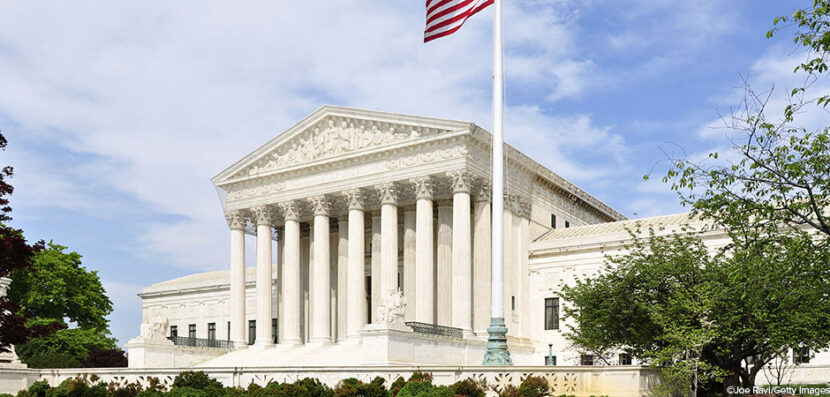
Supreme Court Rules on Church vs. State Issue
Back in March, Election Central brought you the story of a forty-foot concrete cross that sparked a new debate over the separation of church and state. The case made its all the way to the Supreme Court. Last week, the Court ruled that the cross should be able to stay in its current location on a public right-of-way. Here, Election Central takes a closer look at the case, and what caused the Supreme Court to rule the way it did.
Related Link Review the original Election Central story on this news by clicking this link.
Memorial or Religious Symbol?
Currently, the forty-foot concrete cross stands on a busy median strip in Bladensburg, Maryland, just outside of Washington, D.C. It was originally erected 100 years ago by 49 local mothers to honor their sons who had died in World War I. But in the 1930s, the local parks commission took over the maintenance of the memorial–meaning that about $100,000 in taxpayer dollars were being spent per year to take care of a cross. A group of citizens called the American Humanist Association asked the parks commission to remove the memorial, place it on private lands, and use private dollars to maintain it. They say that using public tax dollars to pay for a Christian symbol is a violation of the Constitutional separation of church and state.
But supporters of keeping the cross where it is say that it’s not just strictly a religious symbol. Rather, it’s a war memorial with important local significance. And last week in a 7-2 vote, the Supreme Court overturned a lower court’s order and agreed.
A Court Divided
According to Justice Samuel Alito, who wrote the majority opinion, the memorial isn’t discriminatory in nature. In his opinion, the Constitution’s Religion Clause is about all religions living together in harmony, not removing all religious symbols from society. Justice Alito went on to state that the cross has essentially become a secular symbol, appearing on memorials and graves of U.S. soldiers all over the country, and that taking down the Maryland cross could possibly lead to memorials being removed in many other places as well.
But Justice Ruth Bader Ginsburg, writing on behalf of the minority, disagreed with the idea that the cross has become secular. She called it the fundamental symbol of Christianity and pointed out that the graves of non-Christian soldiers don’t carry this marking. Furthermore, she said, the Religion Clause actually means that the government has a responsibility to remain neutral and non-religious and that allowing a government entity to fund the cross is a violation of that important neutrality.
So What Does This Mean?
Legal experts and scholars disagree about the ruling’s implications. Some interpreted it to mean that public religious symbols (such as crosses and memorials) that already exist will probably be left alone, though future ones on public land likely won’t be allowed. Other experts expressed concern that the Court has now established a “slippery slope” that could eventually lead to prayer in schools and another blending of the line between church and state.


